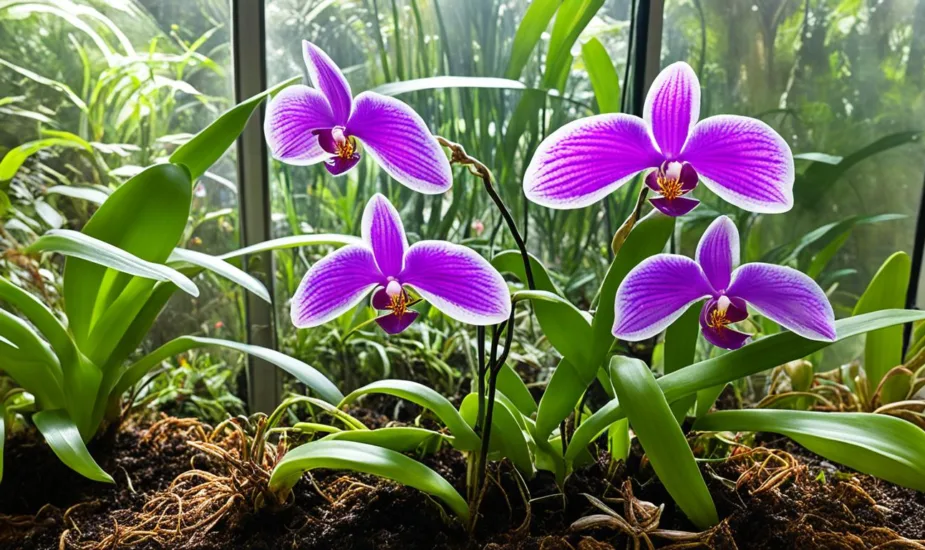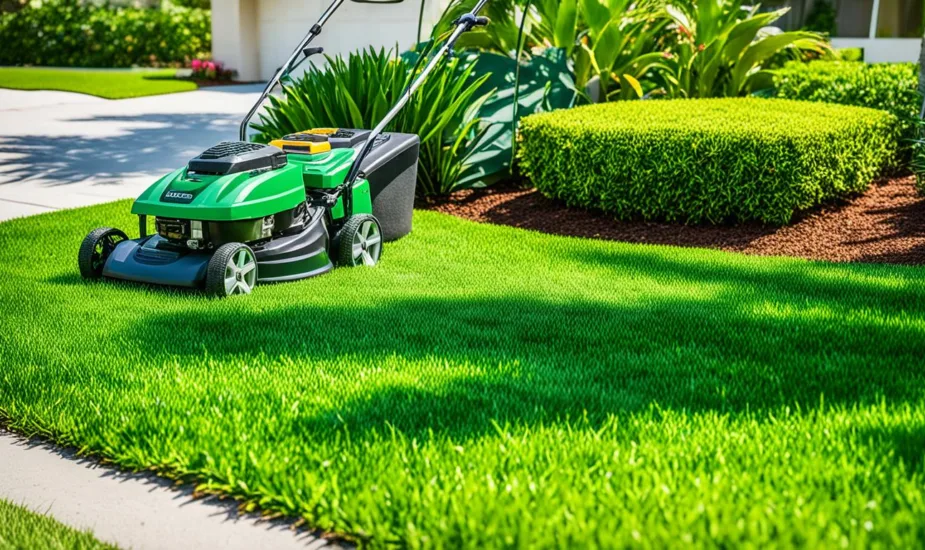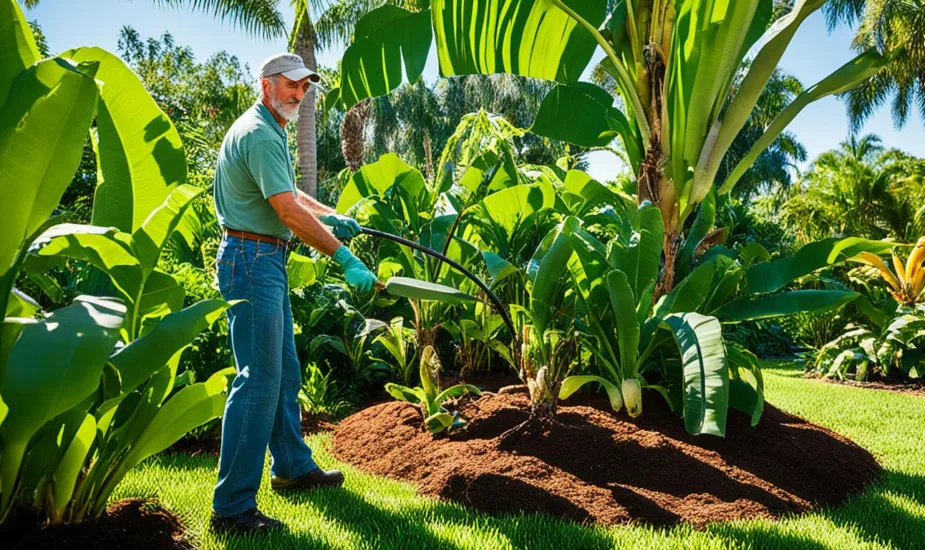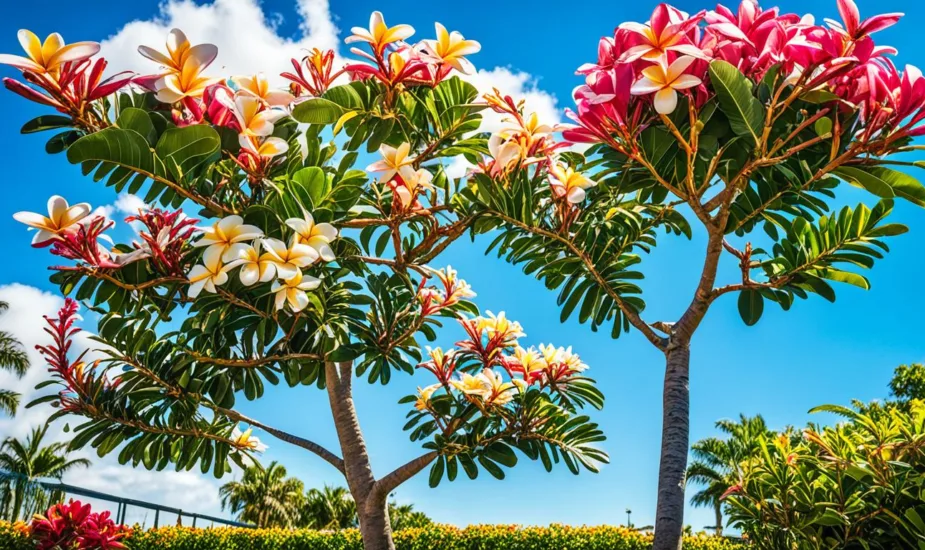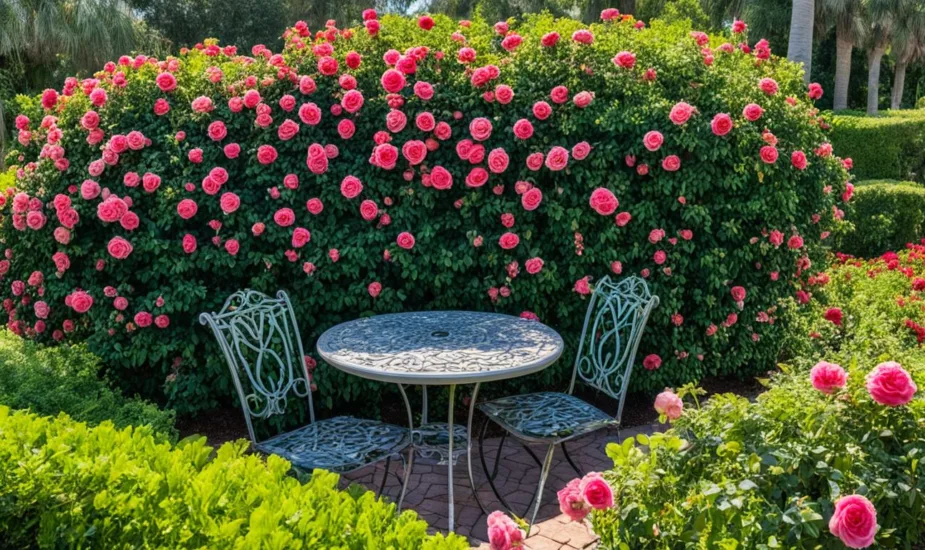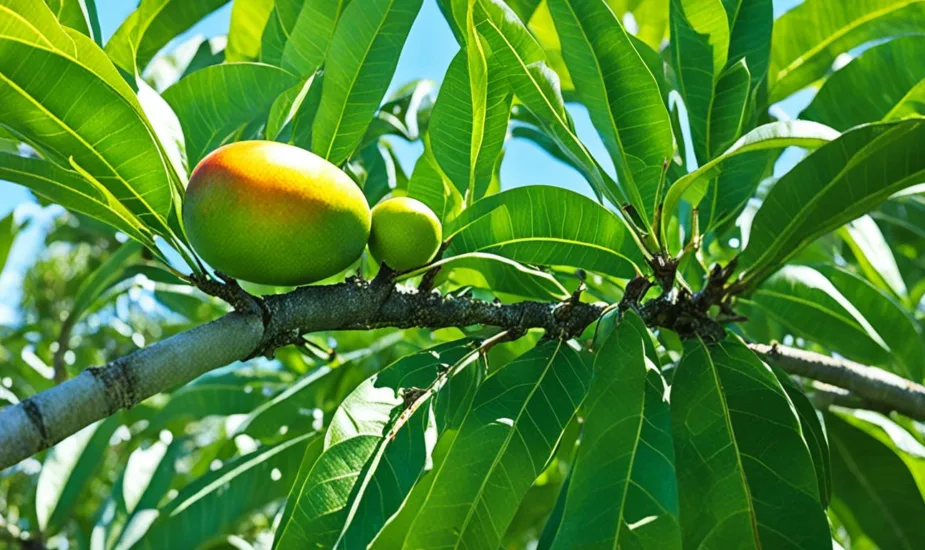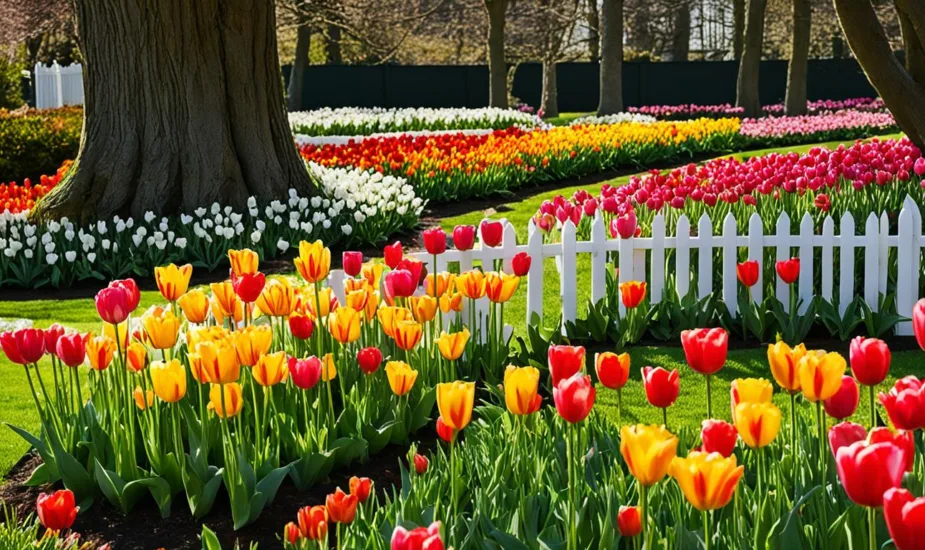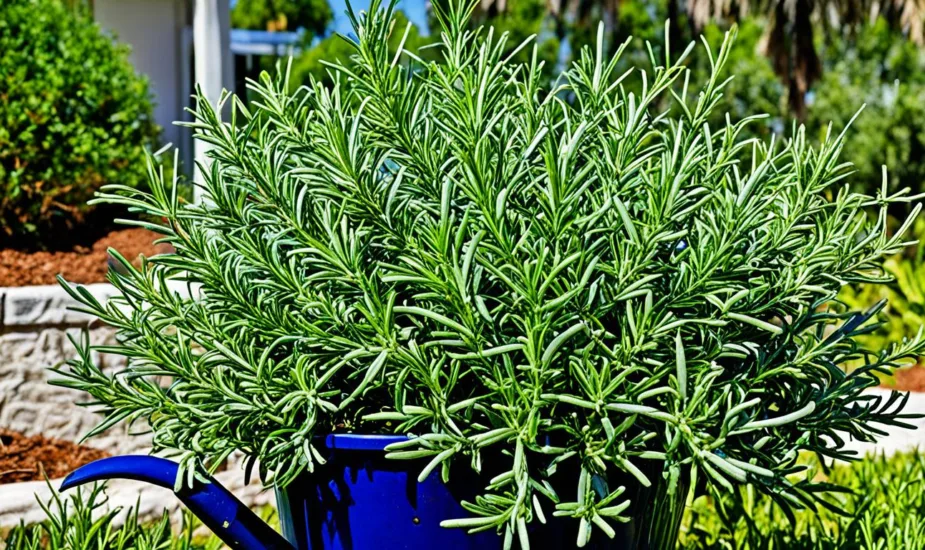Florida Juniper Bonsai Care Tips & Tricks
Discover essential tips for thriving juniper bonsai care in Florida, covering indoor/outdoor practices, watering, sunlight, and seasonal advice.
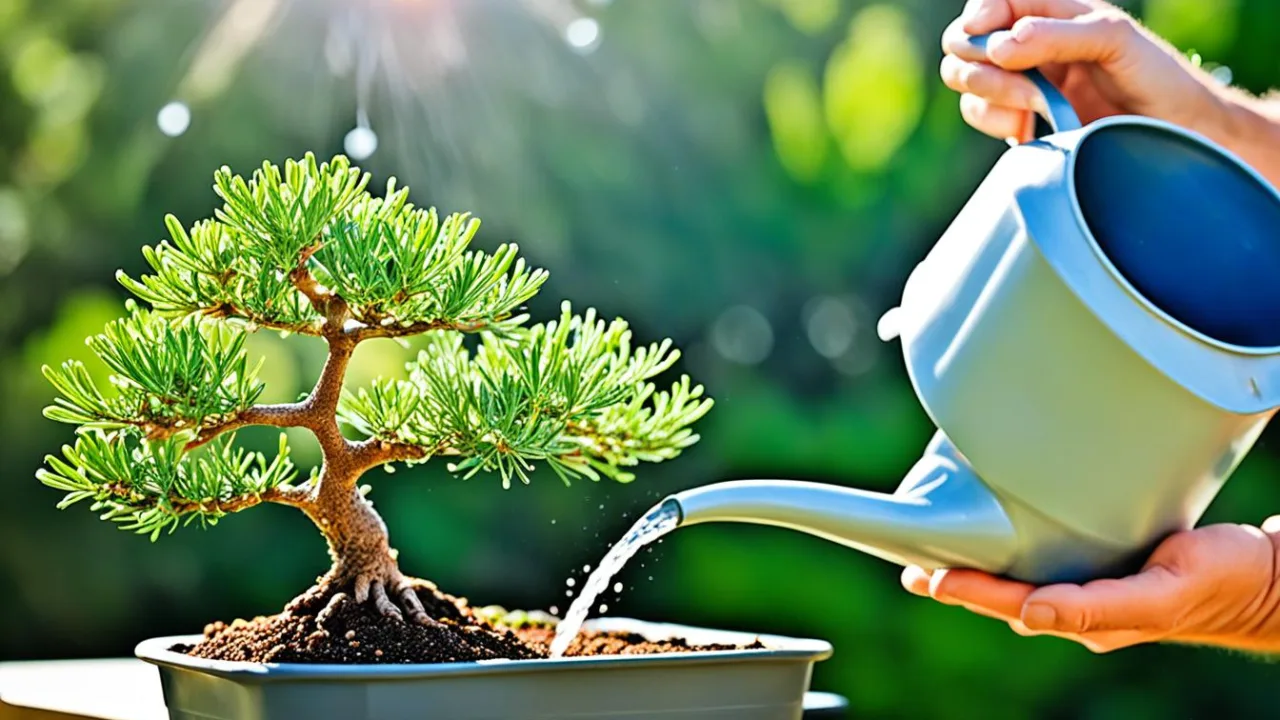
Have you ever marveled at the beauty of a bonsai tree? The delicate branches, the intricate foliage, and the serene beauty it exudes. It’s no wonder that bonsai enthusiasts dedicate their time and effort to cultivate these miniature wonders of nature. But caring for these trees requires knowledge and attention, especially when it comes to juniper bonsai in the unique climate of Florida.
Let me share a story with you. Last summer, I embarked on a journey to grow my very own juniper bonsai. Excited and curious, I researched the best practices and techniques to ensure its well-being. As I learned more, one thing became clear – Florida’s climate posed unique challenges for juniper bonsai care.
I discovered that the placement and sunlight requirements were crucial to the tree’s health. Juniper bonsai thrives when placed outside in a bright location with ample sunlight. Unfortunately, indoor cultivation was not suitable due to the specific sunlight needs of the tree. It’s as if the juniper bonsai craved the warmth of the Florida sun on its miniature branches.
Another essential aspect I learned was watering. Juniper bonsai in Florida are sensitive to wet soil conditions, so allowing the soil to slightly dry before watering is crucial. I also discovered the benefits of misting the tree to increase air humidity, especially after repotting.
As I delved deeper into the world of juniper bonsai care in Florida, I learned about fertilizing and pruning techniques. Regular fertilizing during the growing season with organic fertilizer pellets or liquid fertilizer helped promote strong growth. Pruning included pinching or cutting long shoots to develop foliage pads, but I quickly realized the importance of not trimming the juniper like a hedge, as it can weaken the tree.
Repotting and soil composition were other areas I focused on. Repotting every two years with a well-draining soil mixture ensured the bonsai’s roots had ample space to grow. And I discovered the benefits of selecting an appropriate soil composition, such as a bonsai soil mix, to provide proper drainage and aeration.
Of course, caring for a juniper bonsai in Florida also meant being vigilant about pest control and winter care. Pests like spider mites, scale, aphids, and needle miners could be a nuisance, so regular checking and appropriate insecticide sprays were necessary. And during winter, providing enough light and monitoring the tree for pests was crucial to its survival.
In conclusion, caring for juniper bonsai in Florida requires attention to detail and an understanding of the unique challenges presented by the climate. By following these tips and tricks, bonsai enthusiasts like me can enjoy the beauty and serenity of thriving juniper bonsai trees in the Sunshine State.
Key Takeaways
- Juniper bonsai in Florida thrive when placed outside in a bright location with ample sunlight.
- Careful watering is essential, as juniper bonsai are sensitive to wet soil conditions.
- Regular fertilizing and pruning techniques promote strong growth and the development of foliage pads.
- Repotting every two years with a well-draining soil mixture allows the bonsai’s roots to grow properly.
- Vigilant pest control and winter care are necessary to ensure the bonsai’s health and survival.
Placement and Sunlight Requirements
When it comes to juniper bonsai care in Florida, proper placement and sunlight requirements are crucial for the health and growth of your tree. Juniper bonsai thrives when placed outdoors in a bright location with ample sunlight. It is not suitable for indoor cultivation as it relies on natural light to grow and develop properly. In fact, without sufficient sunlight, it may become weak and leggy, compromising its overall aesthetic appeal.
Outdoor placement allows the juniper bonsai to benefit from the full spectrum of natural light, including UV rays that are essential for photosynthesis. The unobstructed sunlight helps the tree produce energy, maintain its vibrant green foliage, and form compact foliage pads. It also promotes healthy root development, which is crucial for the overall vitality of the bonsai.
It’s important to note that juniper bonsai in Florida requires a significant amount of sunlight to thrive. Therefore, it’s recommended to place it in a spot that receives at least 4 to 6 hours of direct sunlight daily. This ensures that the tree can meet its energy requirements and carry out essential biological processes.
“Proper placement and adequate sunlight are key factors for the health and growth of juniper bonsai in Florida. Placing the bonsai outside in a location with ample sunlight ensures it receives the necessary light for photosynthesis and overall vitality.”
However, it’s important to consider the specific needs of your juniper bonsai in terms of sunlight exposure. Some juniper species may tolerate full sun, while others prefer partial shade. It’s recommended to research the specific variety you have to determine its sunlight preferences and adjust the placement accordingly. Observing the tree’s response to different light conditions can also provide helpful insights into its specific requirements.
During winter, when temperatures in Florida can occasionally drop below 15 °F (-10 °C), it’s important to protect your juniper bonsai from freezing. Consider bringing it indoors during extreme cold spells or providing temporary protection like frost cloth or a cold frame. This ensures the tree remains healthy and minimizes the risk of winter damage.
Watering and Water Requirements
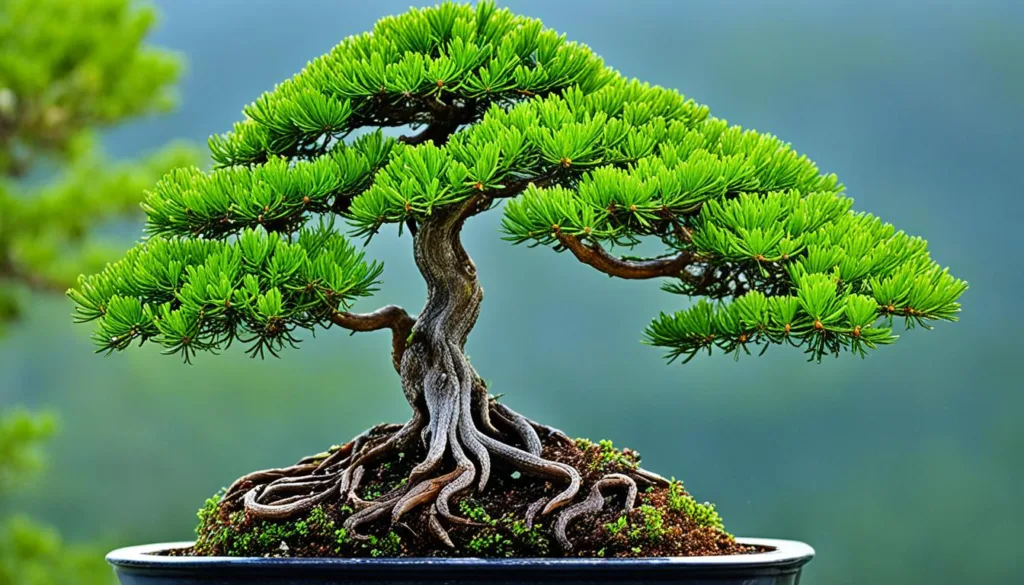
Careful watering is essential for juniper bonsai in Florida. The roots of the bonsai tree are sensitive to wet soil conditions, so it’s crucial to maintain a proper watering schedule and ensure the soil’s wetness is appropriate for optimal growth.
To avoid overwatering, it’s important to allow the soil to slightly dry before watering again. This helps prevent root rot and ensures the bonsai receives adequate water without becoming waterlogged. As a general rule of thumb, check the soil’s moisture level by inserting your finger about an inch into the soil. If it feels dry at that depth, it’s time to water the tree.
When watering the juniper bonsai, it’s recommended to water thoroughly until water drains from the drainage holes at the bottom of the pot. This helps to ensure the entire root system receives moisture. Afterward, allow any excess water to drain completely.
Misting the juniper bonsai can also be beneficial, particularly in Florida’s dry climate. This helps to increase the air humidity and prevent the foliage from drying out. Misting is especially important after repotting, as it aids in the recovery of the bonsai tree.
By closely monitoring the watering schedule and ensuring the proper wetness of the soil, you can create an optimal environment for your juniper bonsai to thrive in the unique climate of Florida.
“Proper watering is key to the health and growth of juniper bonsai in Florida. By allowing the soil to slightly dry before watering and misting the tree to increase humidity, you can ensure the bonsai receives the right amount of moisture for optimal growth.”
| Watering Tips | Benefits |
|---|---|
| Allow soil to dry slightly before watering | Prevents root rot |
| Water thoroughly until drainage occurs | Ensures entire root system receives water |
| Mist the bonsai tree to increase air humidity | Prevents foliage from drying out |
Fertilizing and Pruning Techniques
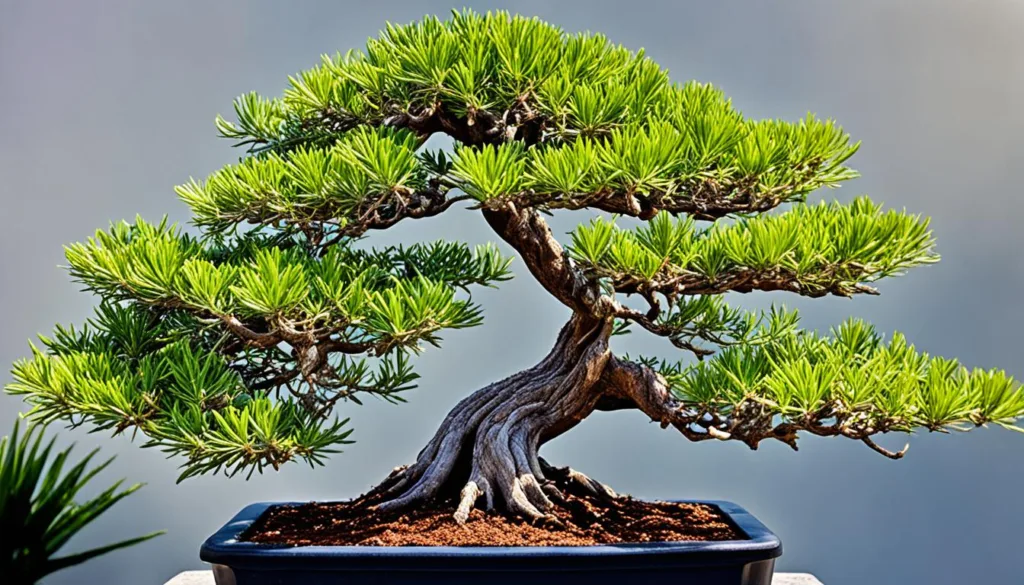
Proper fertilizing and pruning techniques are essential for maintaining the health and beauty of juniper bonsai in Florida. By following these practices, you can promote strong growth, develop foliage pads, and ensure the longevity of your bonsai tree.
1. Fertilizing
Juniper bonsai in Florida requires regular fertilizing during the growing season to provide the necessary nutrients for optimal growth. Organic fertilizer pellets or liquid fertilizer can be used to deliver essential elements to the tree.
When applying fertilizer, it’s important to follow the manufacturer’s instructions regarding dosage and frequency. Over-fertilizing can lead to nutrient burn, while under-fertilizing can result in stunted growth. Generally, fertilizing should be done every two to four weeks during the active growing period, which is typically from spring to early fall.
It’s advisable to choose a balanced fertilizer with equal proportions of nitrogen (N), phosphorus (P), and potassium (K). This balanced ratio ensures overall growth, strong root development, and healthy foliage. However, if you notice any specific deficiencies or issues with your juniper bonsai, you may opt for a specialized fertilizer tailored to address those concerns.
Proper fertilizing is crucial for the growth and health of juniper bonsai in Florida. Regular application of organic fertilizer or liquid fertilizer during the growing season promotes strong growth and ensures the tree’s vitality.
2. Pruning
Pruning is an essential technique for shaping and maintaining the desired form of your juniper bonsai. It involves pinching or cutting long shoots to encourage the growth of compact and dense foliage pads.
When pruning your juniper bonsai, it’s important to avoid trimming it excessively, as this can weaken the tree. Instead, focus on selectively removing only the necessary branches and shoots to maintain its natural beauty. Pruning should ideally be done during the early spring or late winter, before the tree enters its active growth phase.
It’s helpful to have a pair of quality bonsai pruning shears to facilitate clean cuts. Sterilizing the shears before each use helps prevent the spread of diseases or pests.
Proper pruning techniques allow for the development of well-defined foliage pads, enhancing the aesthetic appeal of juniper bonsai in Florida. Careful and selective pruning helps maintain the tree’s health and overall balance.
Summary:
Fertilizing and pruning are integral aspects of juniper bonsai care in Florida. Regular fertilizing with organic pellets or liquid fertilizer provides the required nutrients for healthy growth. Pruning techniques such as pinching or cutting long shoots help develop lush foliage pads. However, it’s crucial to avoid excessive pruning and maintain the tree’s natural form.
| Fertilizing | Pruning |
|---|---|
| Regular fertilizing during the growing season | Pinching or cutting long shoots |
| Organic fertilizer pellets or liquid fertilizer | Selective removal of necessary branches and shoots |
| Balance of N, P, and K for overall growth | Prune during early spring or late winter |
Repotting and Soil Composition
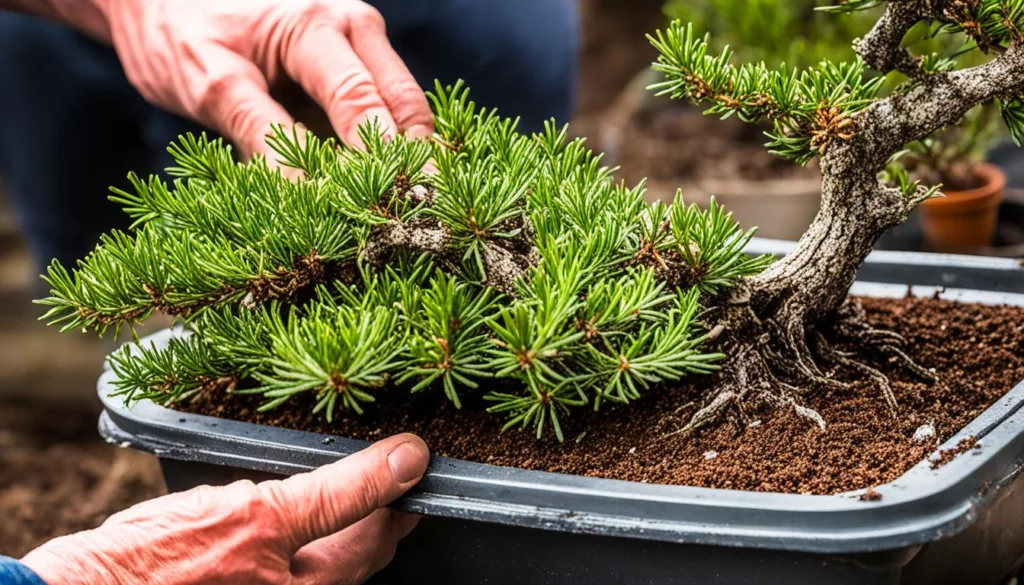
When it comes to caring for juniper bonsai in Florida, repotting is an essential task that should be done every two years. This helps ensure the health and vitality of the tree by providing it with fresh soil and sufficient space for root growth.
Repotting is best done in early spring when the tree is transitioning from its dormant period to active growth. During this time, the tree is better equipped to recover from the stress of repotting and adjust to its new environment.
When repotting juniper bonsai in Florida, it’s important to choose a well-draining soil mixture. This allows excess water to drain away quickly, preventing waterlogged roots. One recommended soil composition for juniper bonsai is a bonsai soil mix, which typically consists of a combination of Akadama, volcanic rock, and organic matter.
It’s crucial not to prune the roots aggressively during repotting, as juniper bonsai in Florida rely on their roots to absorb nutrients and water. Instead, gently trim any overly long or damaged roots while maintaining the overall root structure.
Note: Bonsai soil mix is widely available at nurseries and online retailers specializing in bonsai supplies. It’s specifically formulated to provide the right balance of drainage and aeration for bonsai trees, including juniper species.
Overall, repotting juniper bonsai in Florida every two years with a suitable soil mixture ensures the tree’s continued health and longevity. By providing the tree with fresh soil and adequate root space, you give it the best chance to thrive in the unique climate of Florida.
Pest Control and Winter Care
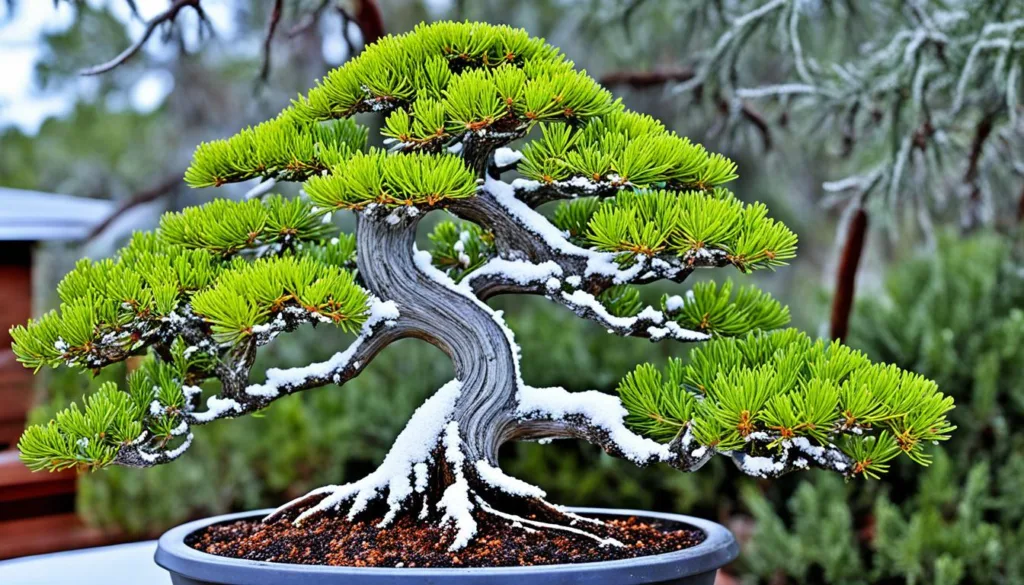
When caring for juniper bonsai in Florida, it’s important to be aware of potential pest infestations and take necessary precautions to ensure the health and vitality of your tree. Common pests that can affect juniper bonsai include spider mites, scale, aphids, and needle miners. Regularly checking your tree for signs of pest activity is crucial for early detection and prompt treatment.
One effective method to control pests is through the use of appropriate insecticide sprays. Selecting a suitable insecticide that targets the specific pest infestation is important to ensure its effectiveness and minimize harm to the tree. It’s always recommended to follow the instructions provided by the manufacturer and apply the insecticide according to the suggested frequency and dosage.
Rust Diseases
“Rust diseases can also pose a threat to juniper bonsai in Florida. These fungal infections can cause discoloration, lesions, and defoliation, ultimately weakening the tree if left untreated.”
Some juniper species exhibit natural resistance to rust diseases, while others may be more susceptible. It’s essential to choose a species known for its resistance when cultivating juniper bonsai in Florida. Additionally, maintaining proper bonsai care practices, such as ensuring good air circulation, avoiding excessive moisture on the foliage, and promptly removing any affected plant parts, can help prevent the spread of rust diseases.
Winter Care
Winter care is crucial for the well-being of juniper bonsai in Florida. While they are generally hardy, some protection measures are necessary during harsh cold spells. It is important to provide enough light during the winter months, especially if the tree is kept indoors or in a greenhouse. Ensuring the tree receives adequate sunlight promotes healthy growth and helps prevent leggy and weak branches.
Monitoring the tree for pest activity is also essential during winter as certain pests can still be active in milder climates. Regularly inspecting the tree for signs of infestation, such as webbing or tiny insects, allows for timely intervention and prevents potential damage to the tree.
| Pest | Signs of Infestation | Treatment |
|---|---|---|
| Spider Mites | Webbing, stippling on foliage | Apply insecticidal soap or neem oil |
| Scale | Tiny brown or black bumps on branches or leaves | Apply horticultural oil or insecticidal soap |
| Aphids | Clusters of small, soft-bodied insects on new growth | Spray with insecticidal soap or hose off with water |
| Needle Miners | Discolored or distorted needles | Apply appropriate insecticide according to label instructions |
Conclusion
In conclusion, proper care for juniper bonsai in Florida is essential for maintaining healthy and thriving trees. By paying attention to key aspects such as placement, watering, fertilizing, pruning, repotting, pest control, and winter care, bonsai enthusiasts can ensure the longevity and beauty of their juniper bonsai trees.
When it comes to placement, it is important to provide the bonsai with adequate sunlight by positioning it in a bright outdoor location. Juniper bonsai trees are not suitable for indoor cultivation in Florida due to their specific sunlight requirements.
Watering should be done carefully, allowing the soil to slightly dry out before watering again. Overwatering can lead to root rot, which can be detrimental to the health of the tree. Additionally, regular fertilizing during the growing season promotes strong growth and vibrant foliage.
Pruning techniques, such as pinching or cutting long shoots, help in shaping the bonsai and developing foliage pads. However, it is crucial to avoid excessive pruning that can weaken the tree. Additionally, repotting every two years using a well-draining soil mixture and proper winter care are essential for the overall health of the juniper bonsai.
Lastly, vigilance against pests and rust diseases is crucial. Regular monitoring, appropriate insecticide sprays, and selecting rust-resistant juniper species can help prevent infestations and diseases. By following these tips and tricks, bonsai enthusiasts can successfully care for juniper bonsai trees in the unique climate of Florida.
 Little Garden Tips
Little Garden Tips




